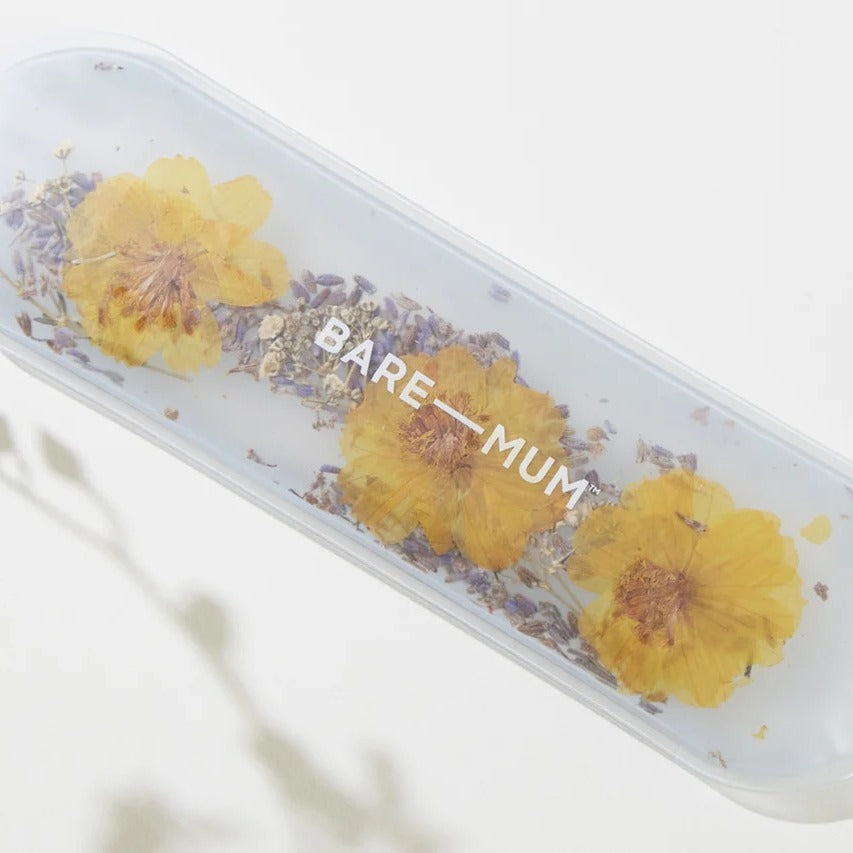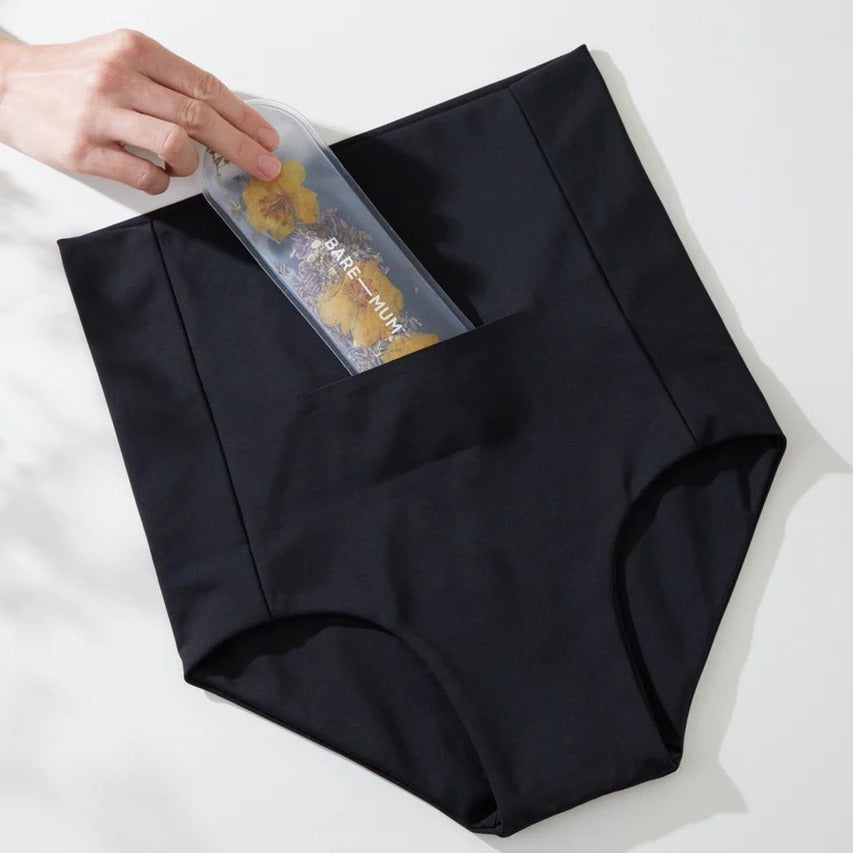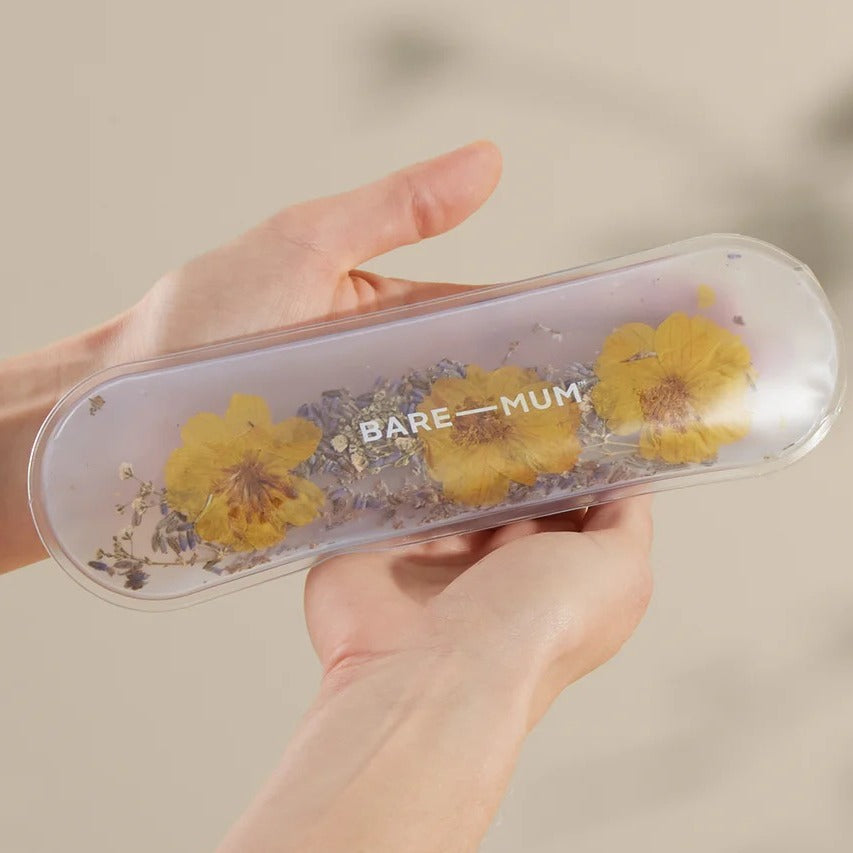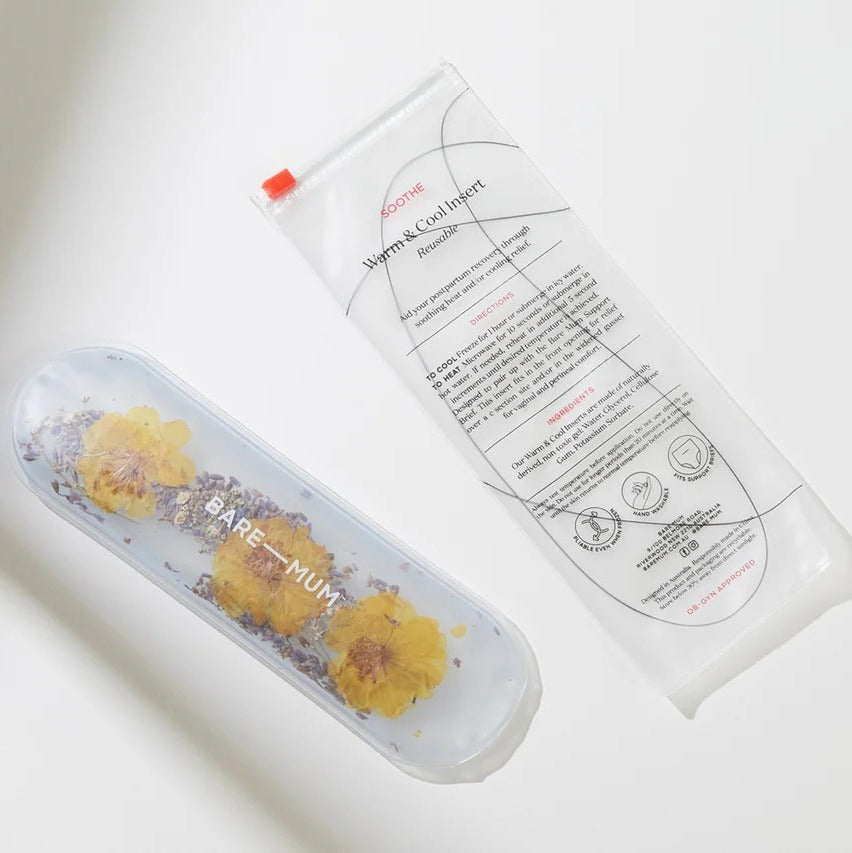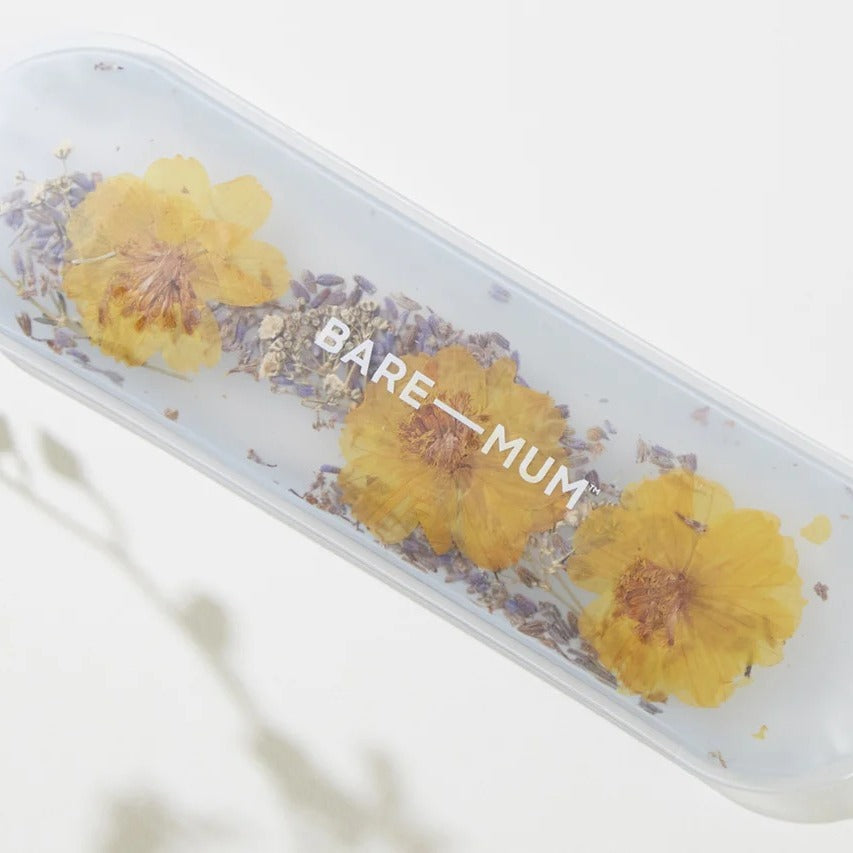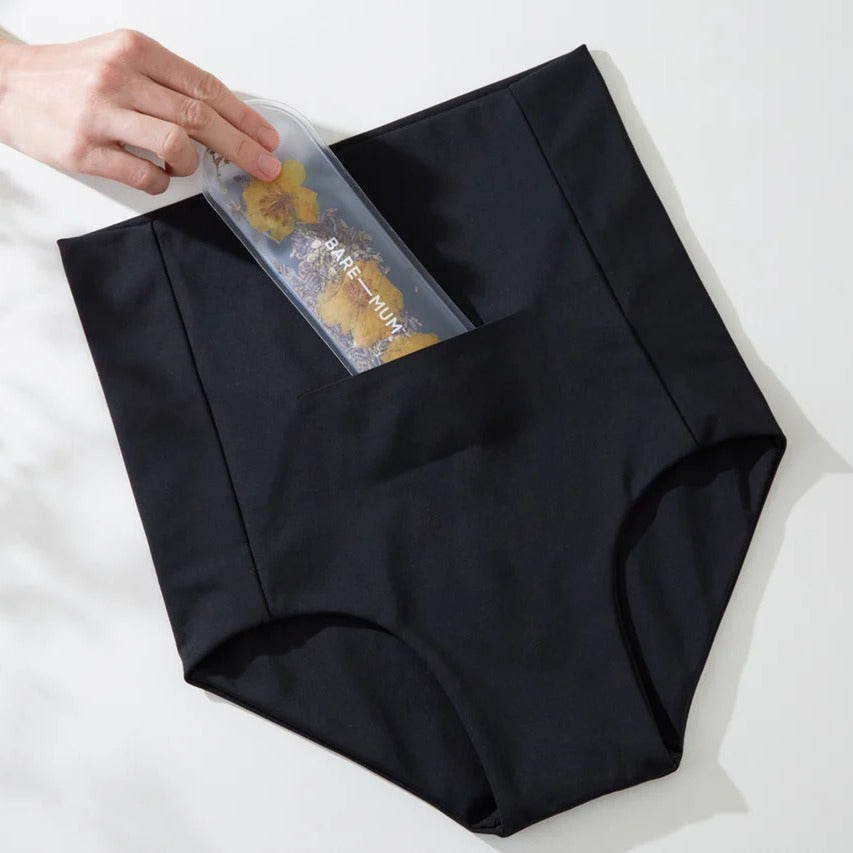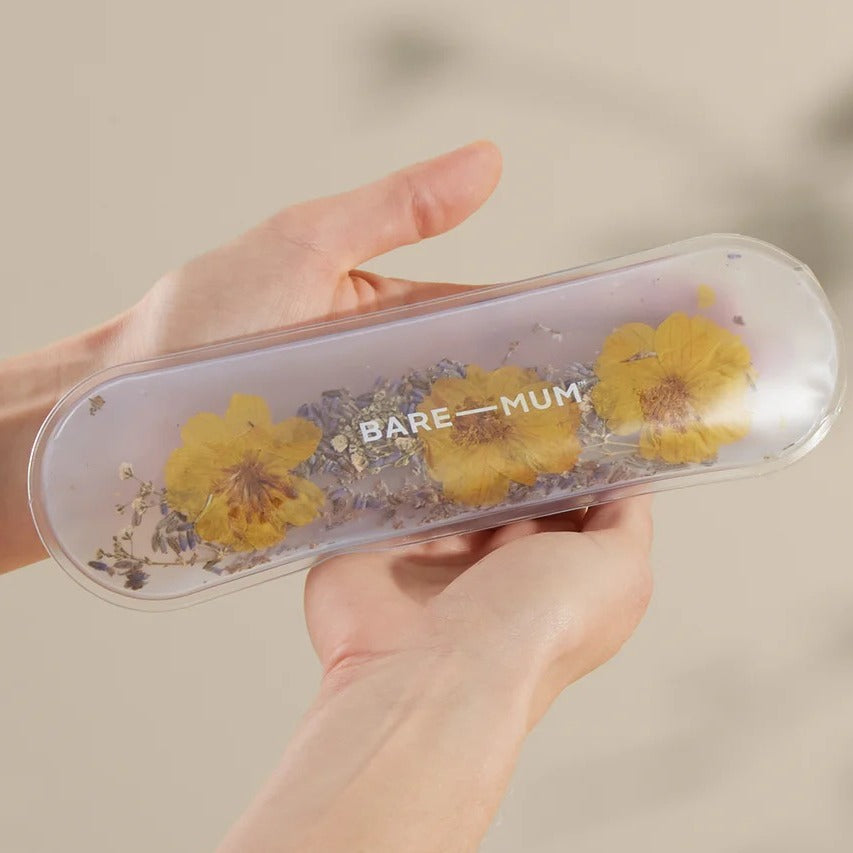Warm & Cool Insert
Warm & Cool Insert
SKU:ICEPACK
In stock
Couldn't load pickup availability
Overview
Overview
Support your postpartum recovery with Bare Mum's Warm and Cool Inserts, offering soothing relief exactly where you need it.
These reusable inserts are thoughtfully designed to fit into the front opening of the Bare Mum Postpartum Briefs, providing targeted comfort to the lower abdomen or over a c-section site, as well as in the widened gusset for perineal relief.
Utilize heat therapy to increase blood flow and soften the perineum during labor, or to ease aches and cramps after birth. Opt for cold therapy to reduce swelling, irritation, and inflammation. These versatile inserts can be reused indefinitely to alleviate pelvic or back pain, hemorrhoids, vulvar varicosities, prolapse, and PMS symptoms.
What's Included
What's Included
Technical Specification
Technical Specification
User Guide
User Guide
Delivery and Returns
Delivery and Returns
- Delivery: Free within NZ on orders over $100 (excluding bulky items) or $8 standard shipping
- Returns: Accepted within 14 days of receipt with proof of purchase
- Some items are excluded from returns including sale items, hardware, car seats, prams, monitors and personal items - please click here for the full list.
Share this product
Recently Viewed Products
Related Blogs
Health Tips for Pregnant Mums
Written by Kylie Stowe www.nourishedclinic.co.nz My name is Kylie. I am a mum of four, a Nutrition & Health Coach, and a Mindfulness Teacher.Being a busy mum myself, I’m drawn to nutrition and wellbeing for mums – an area of health that is often undervalued. Over the coming months, I’m really excited to share some practical tips, recipes and personal experiences to help you navigate these beautiful, yet sometimes challenging, times. I’m thankful that the team here at Dimples saw the need to go beyond supplying beautiful baby goods to also nourish and care for our mums. Health Tips for Pregnant Mums Focus on whole, unprocessed, nourishing foods There is a lot of pressure on pregnant mums to eat the ‘perfect diet’. This can be incredibly confusing due to the overwhelming amount of conflicting information out there. You’re not alone if this has been a source of guilt – especially when morning sickness makes eating anything but iceblocks and dry crackers impossible. Just remember, you do what you have to do to get through those early months. Nutrient requirements during pregnancy are higher, and supporting a growing baby can often deplete your own stores. Building meals from whole, unprocessed foods is a great option, as they’re rich in essential nutrients. Heavily processed foods are often low in nutritional value – hence the term “empty calories”. Think: Good quality protein such as free-range or grass-fed meats, seafood, eggs, legumes, nuts, and seeds At least four serves of colourful vegetables and two serves of fruit Whole grains like quinoa, steel-cut oats or brown rice Pasteurised dairy (if tolerated) Healthy fats like extra virgin olive oil and avocado If morning sickness makes meals tricky, smoothies can be a great way to get nutrients in. My go-to was Nuzest’s Clean Lean Protein (a high-quality powder with no fillers), nut butter, banana, berries, greens and almond milk. Hydration is also important. Aim for two glasses of water on waking (we often wake dehydrated), and another two litres throughout the day. After the first trimester, 1–2 cups of pregnancy-safe tea (like Artemis Pregnancy Tea) can also be helpful. If nausea makes hydration hard, try small sips often. Diet alone can’t always meet every nutritional need – a good quality prenatal supplement containing folate, iodine, vitamin D and DHA is a smart addition. Always speak to your LMC or health professional about what’s right for you. Movement is also important – even just a walk outdoors. The fresh air and added vitamin D boost mood, support the immune system and help with joint and fitness health during pregnancy. There are also great prenatal fitness and yoga classes available – these are wonderful for connecting with other mums-to-be. Some of the mums I met through yoga have become lifelong friends and a valuable part of my motherhood support network. I always say: aim for progress, not perfection when it comes to health and nutrition. Recognising that this is an ongoing journey can ease the pressure of trying to get it “just right”. If you’d like to dive deeper into prenatal nutrition, I highly recommend dietitian Lily Nichols’ book Real Food for Pregnancy. It’s full of great information and recipes. Kylie Stowewww.nourishedclinic.co.nz
Learn moreMotherhood: Beyond the Fourth Trimester
Beyond The Fourth Trimester - A Sustainable Approach To Health Once the first few months with your new baby have passed you might be feeling like the haze of those early weeks has passed. You also might not be there just yet, just as each baby is different so is each pregnancy and the subsequent postpartum period. This is why it is important to be mindful of not judging how well you are doing based on other mothers who might appear to be completely back to normal with a baby who sleeps all night. If you are still breastfeeding, many mothers report a drop in milk supply at this point often saying that they no longer feel like their breasts are as full. This is something I experienced with my first baby and thought it meant I was losing my milk supply. It is normal for the initial fullness and engorgement to diminish as your milk supply is more established at this point, and your body has adjusted to supplying what your baby needs. If you do ever feel concerned by this your Plunket nurse, local lactation consultant or the La Leche league are a wonderful source of support & encouragement. Once those exhausting early months have passed many of the mothers I work with are keen to start focusing on reclaiming their pre-pregnancy bodies and to start dieting and exercising. Focusing on good nutrition and consistent exercise is hugely beneficial and has many positive health impacts such as increased energy, better sleep, improved mood and changes in body composition. What is really important to be mindful of, is that changes in diet and physical activity are best to be done with an incremental approach to minimise the chances of under-fuelling yourself, drops in milk supply, injuries and adding too much pressure on yourself. It also allows you to build sustainable health habits that you are more likely to maintain long term. I always recommend an appointment with a postpartum trained physiotherapist. They can assess your posture for diastasis recti (tummy muscle separation) and guidance on pelvic floor exercises. Women who have had caesareans often think because they haven't had a natural birth they don't need to worry about pelvic floor exercises - this isn't the case, pregnancy still takes its toll on the body so re-strengthening the pelvic floor after carrying a baby is important for all mothers. Working with a personal trainer that specialises in postpartum exercise is a great idea. They can ensure your exercise technique is correct to avoid injury and set an exercise program that is suitable for your current fitness level that will be mindful of the changes that need to be made to a fitness program based on your requirements postpartum. When looking at dieting I always encourage my Mum’s take a non-diet approach to focus on improving health not through restriction but with healthy nutritional choices that improve their health status not diminish it. To achieve this we focus on a nutritional approach that has a strong focus on nutrient repletion to help the body to replete nutrients that were preferentially supplied to their growing baby. Focusing on a diet full of whole unprocessed foods is the foundation for this. Most women find that this approach is very empowering, it leads to better satiety and self-regulation of eating over restriction then binge eating. When it comes to improving your diet always aim for progress, not perfection, and most importantly enjoy your meals! Adequate protein intake is essential for tissue repair and rebuilding especially when exercising. Sources of protein include meat, chicken, seafood, eggs, legumes nuts and seeds. Protein also helps to keep you feeling full for longer. I use and recommend Clean Lean Protein powder for smoothies as it is perfectly safe for breastfeeding mums. You can use the discount code ‘mela’ to save 15% at nuzest.co.nz . Eating plenty of colourful vegetables and some fruits (eat the rainbow!) is important to supply essential vitamins, minerals, phytonutrients, fibre and carbohydrate. I aim to have three fist-sized servings of vegetables with lunch and dinner. It is important to supply yourself with some complex carbohydrate for energy and to assist with glycogen repletion after exercising. Some good sources are pumpkin, yams, kumara, and whole grains such as brown rice and quinoa. Don't forget to incorporate healthy fats with each meal. Fats have been demonised and avoided for so long that many people are not aware of how important adequate fat intake is for health. Dietary fat is essential for the absorption of many nutrients, production of certain hormones, the supply of energy and support of cell growth. Good sources of healthy fats include oily fish such as salmon, extra virgin olive oil, hemp seed oil, avocado, nuts and seeds. Lastly don't forget to drink your water! Aim for two glasses on rising then another 2 litres throughout the day and more when exercising. If you are a breastfeeding mum aiming to have a glass of water with each feed I find keeping a water bottle close by during the day and for those night feeds is a great idea - it’s thirsty work! Kylie Stowe @melawholefoods Postpartum Nourish Bowl Serves 1 Ingredients 120-150 grams of cooked sliced meat (or vegetarian alternative) 2 cups of salad greens 1 cup of an assortment of diced colourful vegetables 1 palm-sized serve of cooked complex carbohydrate (pumpkin, yams, brown rice, quinoa, kumara) ¼ - ½ of an avocado or 40 grams of Feta 1 tbsp of hummus 1tbsp toasted pumpkin & sunflower seeds 2 tbsp of dressing of your choice. Method Arrange all of the ingredients in a bowl, season, drizzle with dressing and enjoy! My favourite dressing is made with extra virgin olive oil, apple cider vinegar & wholegrain mustard. To change up the flavours you can coat your protein in different herbs and spices the one pictured is Moroccan chicken.
Learn moreProtecting your baby from the cold this Winter
How to Dress Your Newborn in Winter When winter sets in, keeping your newborn snug and comfortable becomes a top priority. Dressing baby in natural, breathable layers helps to regulate their temperature and reduce the risk of overheating or getting too cold. At the heart of this is Merino wool – a super-soft, temperature-regulating fibre that’s perfect for delicate skin. Merino is the ideal base for your baby’s winter wardrobe. It works to insulate when it’s cold and cools when it’s warm, keeping baby cosy without the need for bulky layers. At the same time, organic cotton can be used alongside Merino for gentle layering or in warmer indoor settings, giving you flexibility as the temperature shifts. Why Merino is the Best Choice for Winter Unlike synthetic fibres, Merino is breathable, moisture-wicking, and ultra-soft, making it an excellent next-to-skin layer. It naturally helps regulate body temperature, which is essential in those early weeks when your baby can’t do it themselves. Cotton is also a trusted option, especially for sensitive skin. While it doesn’t insulate quite like Merino, it’s great for layering over Merino or wearing in warmer rooms or during nap times when baby doesn’t need as much warmth. What to Dress Baby In During the Day At Home When indoors, comfort is key. A Merino bodysuit or baby grow offers the right amount of warmth without overheating. For mild days or heated rooms, you might choose a cotton bodysuit as the base, layering a Merino cardigan or leggings on top. Combining the two materials gives you the best of both worlds – Merino for temperature regulation, cotton for softness and breathability. Heading Out When you're on the go, think in layers. Start with a Merino base layer, followed by a cotton or Merino baby grow. Add mittens, a beanie, and a warm blanket in the pram or carrier. A simple rule: dress baby in one more layer than you’re wearing. Merino accessories like socks and hats are especially good for keeping warmth in, as babies lose a lot of heat through their head and feet. Dressing Baby for the Car For car rides, avoid bulky outerwear that interferes with the car seat harness. Dress baby in Merino and/or cotton layers, and use a blanket over the harness if needed. Merino’s warmth means you don’t need excessive layers, making it ideal for safe travel. How to Dress Your Baby for Sleep The ideal room temperature for baby’s sleep is between 16°C and 20°C. Use breathable Merino sleepwear and a Dimples Sleeping Bag suited to the room’s temperature (based on TOG rating) to help keep your baby warm and safe without overheating. Sleepwear suggestions: 16°C – Duvet Lined Sleeping Bag (TOG 2–3) over a Merino baby grow, cotton or Merino bodysuit, and socks. 18°C – Merino Lined Sleeping Bag (TOG 1.5–2.5) with a cotton bodysuit and Merino baby grow. 20°C – Summer Sleeping Bag (TOG 1–2) over a lightweight cotton or Merino bodysuit. Using a cotton bodysuit underneath Merino layers is a great option if your baby tends to run warm, or if your home is well heated. Why Layering Matters Layering natural fibres gives you the flexibility to adjust to your baby’s needs throughout the day. Merino next to the skin helps regulate their temperature, while cotton adds comfort and light coverage. If you’re unsure what your baby needs, check the back of their neck – warm (but not sweaty) means they’re just right. Adjust layers as needed. Why Choose Dimples At Dimples, we’ve been lovingly making New Zealand Merino and organic cotton clothing for over 30 years. Our Merino comes from trusted NZ sources, designed with your baby’s wellbeing in mind – soft against their skin, naturally breathable, and kind to the planet. Whether you’re layering for winter sleep or everyday wear, our Merino baby grows, bodysuits, sleeping bags, accessories, and blankets are crafted to keep your little one comfortable, safe, and warm through every season. Cotton remains a wonderful companion to Merino, offering softness and flexibility in your baby’s wardrobe. Together, they make a perfect pair. Explore the full range of Dimples Merino and Organic Cotton essentials online or in store.
Learn moreMindful Meal Prep for Expectant Mums
In today’s busy modern society, the importance of sitting down together as a family at meal times and eating together and sharing about your day is a lost tradition for many. It is instead often a time that is busy, chaotic, and full of distractions with parents and children eating dinner at different times. There has been a plethora of research conducted around the benefits of family meal times, these benefits are said to include reduced rates of obesity, that adults tend to eat more slowly and often consume less food because they are engaged with other family members and discussion. This leads to less fast-paced mindless eating, chewing food adequately, and time for satiety ques to signal you are full more effectively. Something as simple as slowing down at meal times and chewing food effectively is an incredibly powerful health habit as this allows for the first phase of digestion to happen more efficiently. Cephalic phase digestion, meaning ‘of the head’ occurs at the sight, smell and taste of food and results in the excretion of approximately 20% of the gastric secretions required for digesting foods. Being mindful to slow meal times makes a huge difference in allowing the body adequate time for `these digestive phases to take place, chewing food is an incredibly important part of this process as it not only begins the mechanical breakdown of food but allows foods to be effectively mixed with saliva that is full of enzymes required to break down and digest foods. As a busy mum of four myself, I admit at times that when dinner rolls around at the end of a long day it feels like a chore, and can feel like a ‘job’ that I just want to be over as fast a possible. I have become aware that when I approach meal times in this way I end up feeling more stressed and don’t take the time to cook meals that are as nutritious as I would like, often resulting in me feeding the kids first which almost always leaves them not eating much of their dinner. My kids also don’t wind down as well when we approach meal times in this way and can easily flow on to a more challenging bedtime. In contrast, when we cook and eat together as a family, I usually feel less stressed, my children feel a sense of pride in having helped, and because I have put more thought into that meal time its generally a nutritionally superior meal. I almost always find the kids will eat more of their dinner and be far less fussy when meal times are approached in this way. I also notice my children are more relaxed at bedtime when we have had a relaxing family dinner together also. The research has also indicated that eating together builds stronger family relationships as it allows you all to come together and discuss your day, and feel connected and heard which helps to build a stronger sense of belonging which is thought to build self-esteem. Children learn through an example so role modeling good eating habits and table manners provides a great learning opportunity. As I always say aim for progress, and not perfection when it comes to health, if family meal times are not something that you currently do often in your house aim to implement a day a week and build on that. Don’t let it be a source of stress or guilt but instead a new fun tradition to start as a family. In my next blog, we will take a look at fun ways to get kids in the kitchen to teach them the valuable life skill of cooking. Kylie Stowe @melawholefoods Veggie loaded meatballs with salad and kumara wedges Serves 4 Meatballs 400 grams of prime minced beef 1 grated carrot 1c of thinly sliced baby spinach 2 cloves of crushed garlic 1 egg 4 tbsp of grated parmesan 2 tbsp of almond flour 1 tin of Ceres Organics Cherry Tomatoes Handful of freshly chopped thyme Kumara wedges 4 small kumara cut into chunky wedges Drizzle of olive oil Seasoning Side salad 4 cups of salad greens 1c of halves cherry tomatoes 4 tbsp of toasted pumpkin seeds 4 diced gherkins ½ a diced cucumber ½ a diced capsicum Drizzle of balsamic vinaigrette Method Preheat the oven to 180c fan bake Combine and mix through all of the ingredients for the meatballs (besides the tinned tomatoes and thyme) shape into golf ball sized meatballs. Mix the tinned tomatoes and herbs then pop in the fridge while you prepare the kumara wedges. Toss the kumara fries in oil and seasoning. Line a shallow baking dish with baking paper then evenly arrange the kumara wedges and put into the oven. Remove the meatballs from the fridge, lightly brown in a cast iron pan and top with the tomato and herb mixture. Put into the oven. Bake both for approximately 20 minutes depending on your oven. While the kumara and meatballs are baking combine the salad ingredients. I like to serve mine with a dollop of coconut yogurt. Enjoy!
Learn more

